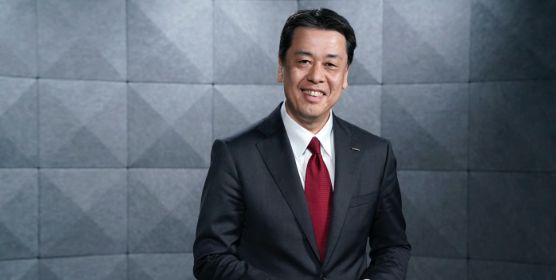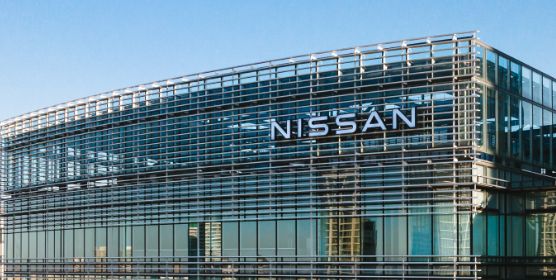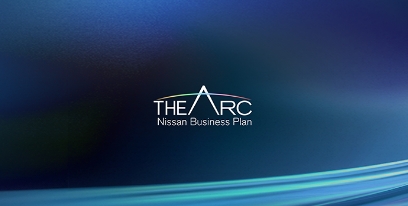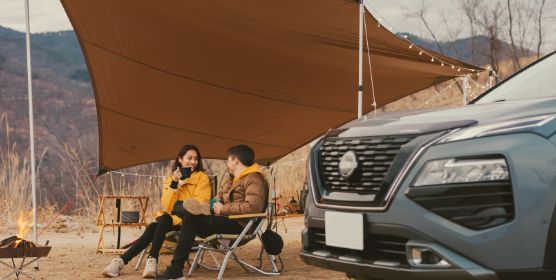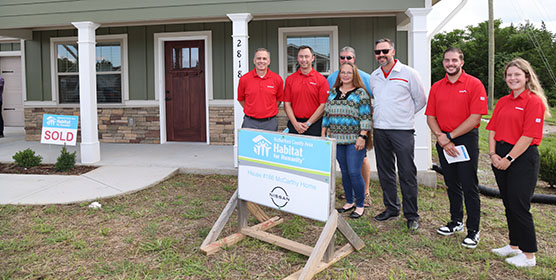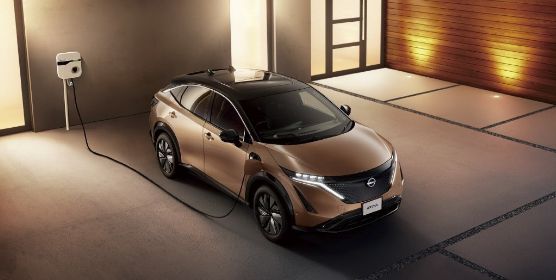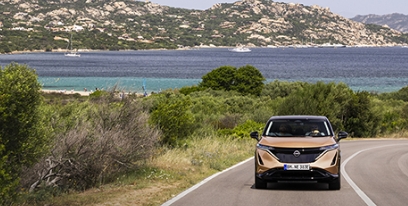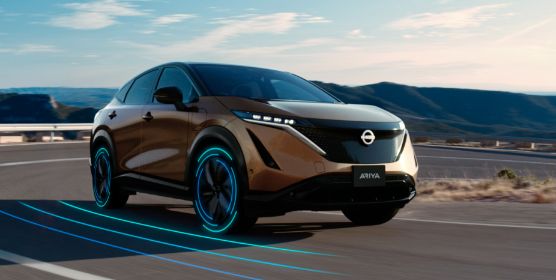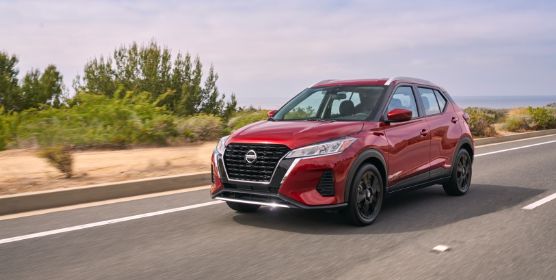Nissan's Beginnings
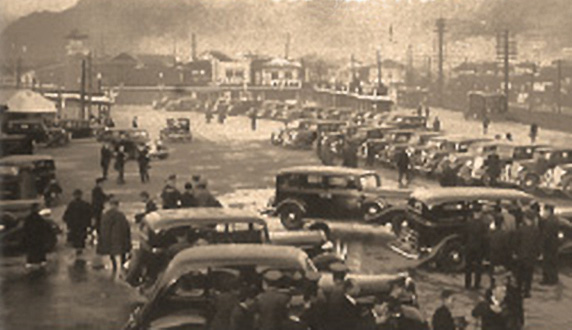
Japan first imported automobiles from Europe and the United States in the late 19th century. Only foreign brands such as Ford and GM were seen on Japan's roads in the Meiji (1868–1912) and Taisho (1912–1926) eras.
Momentum began for manufacturing cars in Japan began to build in the early 20th century and daring entrepreneurs laid the foundations of the nation's automobile industry. The Kwaishinsha Motor Car Works was established in 1911 in the Hiroo district of Tokyo. It was a small workshop, but founder Masujiro Hashimoto had big dreams. Just three years later, Kwaishinsha built the DAT, a small passenger car powered by a twin-cylinder 10ps engine that could hit 32 km/h.
In 1928, exceptional entrepreneur Yoshisuke Aikawa became president of Nihon Sangyo Co. Ltd., the company from which the name Nissan originated. His knowledge of the automotive scene in the United States convinced him cars would become popular in Japan as well.
Only foreign cars from Ford and GM (General Motors) were seen on Japan's roads in the Meiji and Taisho eras. At that time, men like Yoshisuke Aikawa had zealously begun manufacturing vehicles. They are the ones who built the foundation of Japan's automobile industry of today.
1910's
1910
Yoshisuke
Aikawa
establishes
Tobata
Casting
Co.,
Ltd.
Yoshisuke Aikawa was born in Yamaguchi prefecture. He graduated from Tokyo Imperial University (present Tokyo University). When he lived in the United States, Yoshisuke concealed his academic accomplishments and worked in a factory, where he developed casting skill. He established Tobata Casting Co., Ltd., after his return to Japan.
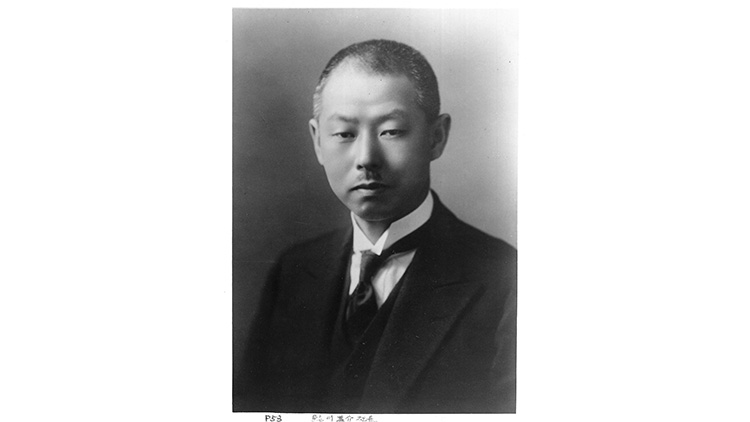
Yoshisuke Aikawa
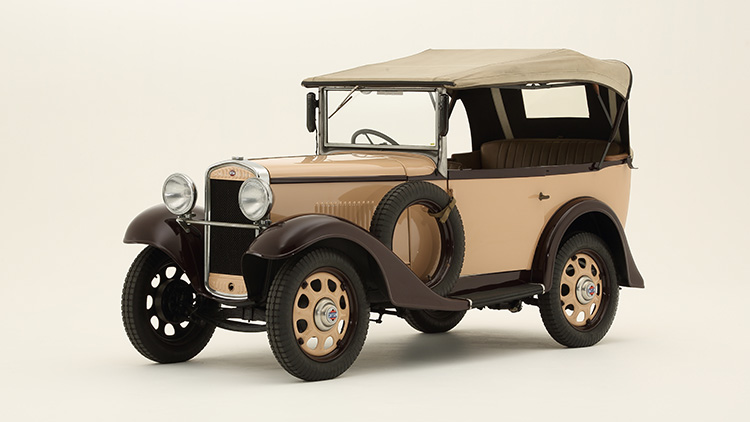
Datsun Fayton 12
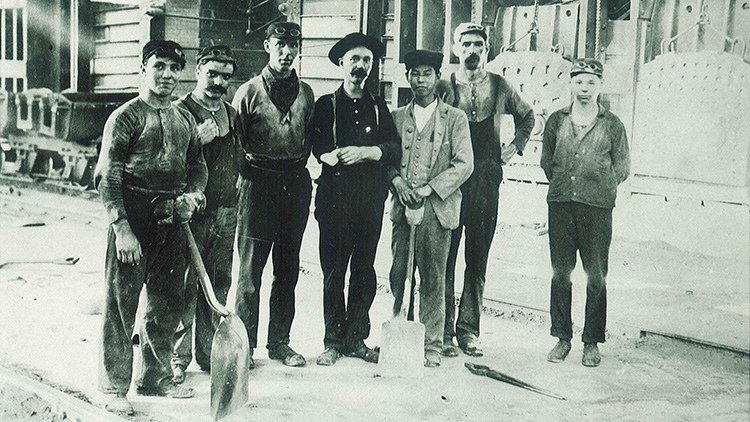
Yoshisuke Aikawa in the United States
1911
Establishment
of
The
Kwaishinsha
Motor
Car
Works
Masujiro Hashimoto led by establishing Kwaishinsha. The factory embarked on domestic automobile production, which became the forerunner of the domestic automobile industry.
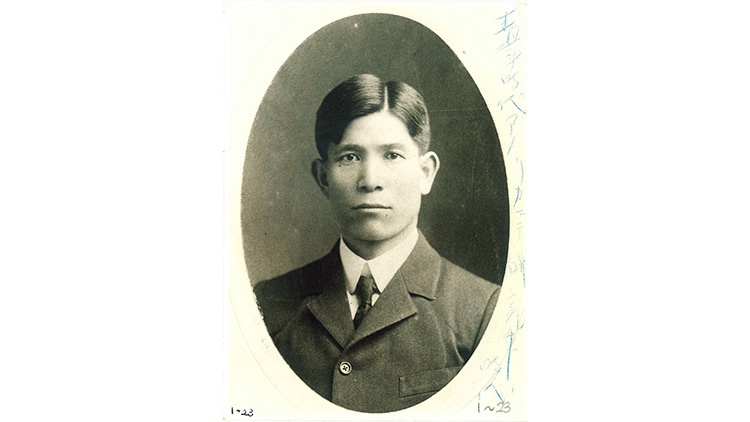
Masujiro Hashimoto
1914
Complete
manufacturing
of
the
DAT
car
The DAT car was named by combining the initials of three men who invested in Kwaishinsha: Den, Aoyama and Takeuchi. The DAT car was entered in the Taisho Exposition held in the same year.
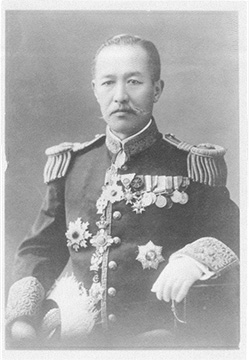
Kenjiro Den
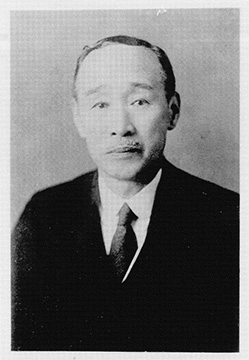
Rokuro Aoyama
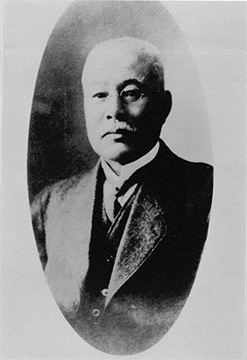
Aketaro Takeuchi
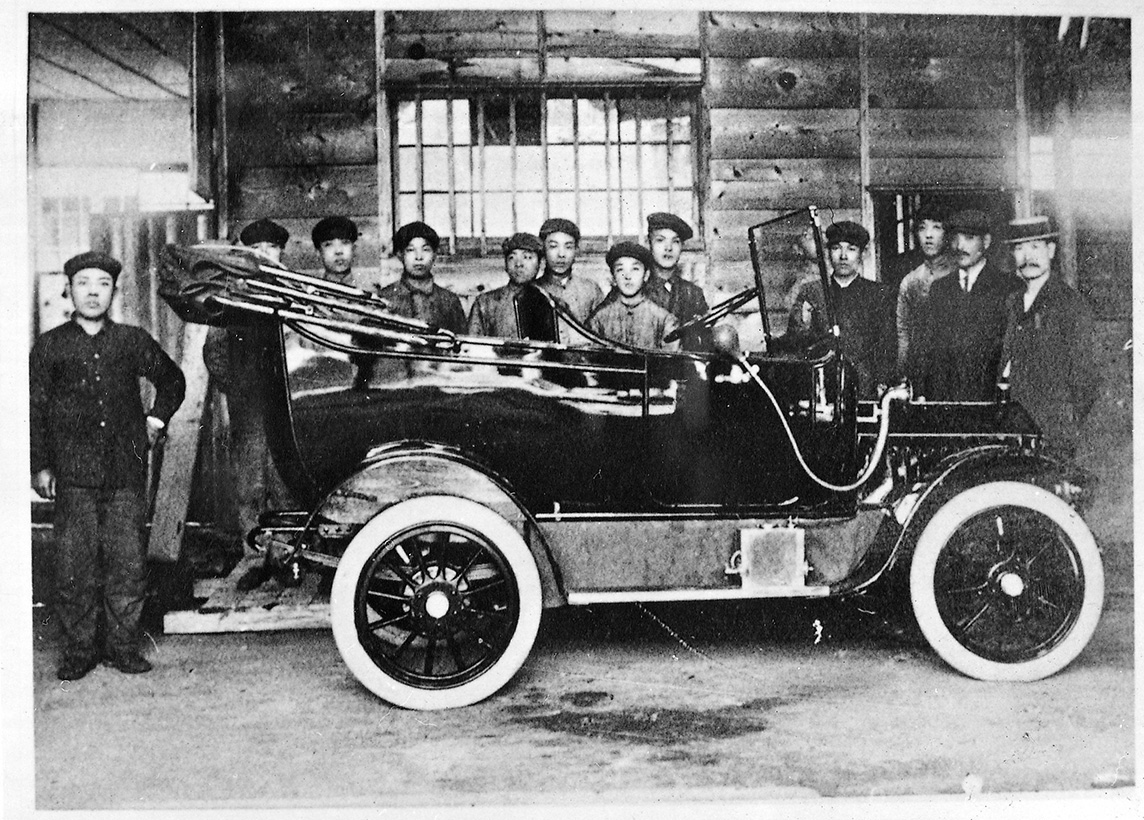
Off-line of the DAT car
1918
Starts
anew
under
the
name
Kwaishinsha
Motor
Car
Co.,
Ltd.
The Kwaishinsha Motor Car Works grew in size to 600 thousand yen in capital, with 60 employees. They completed and released Model 41 DAT in the following year, mounting the first single body casting 4-cylinder engine in Japan.
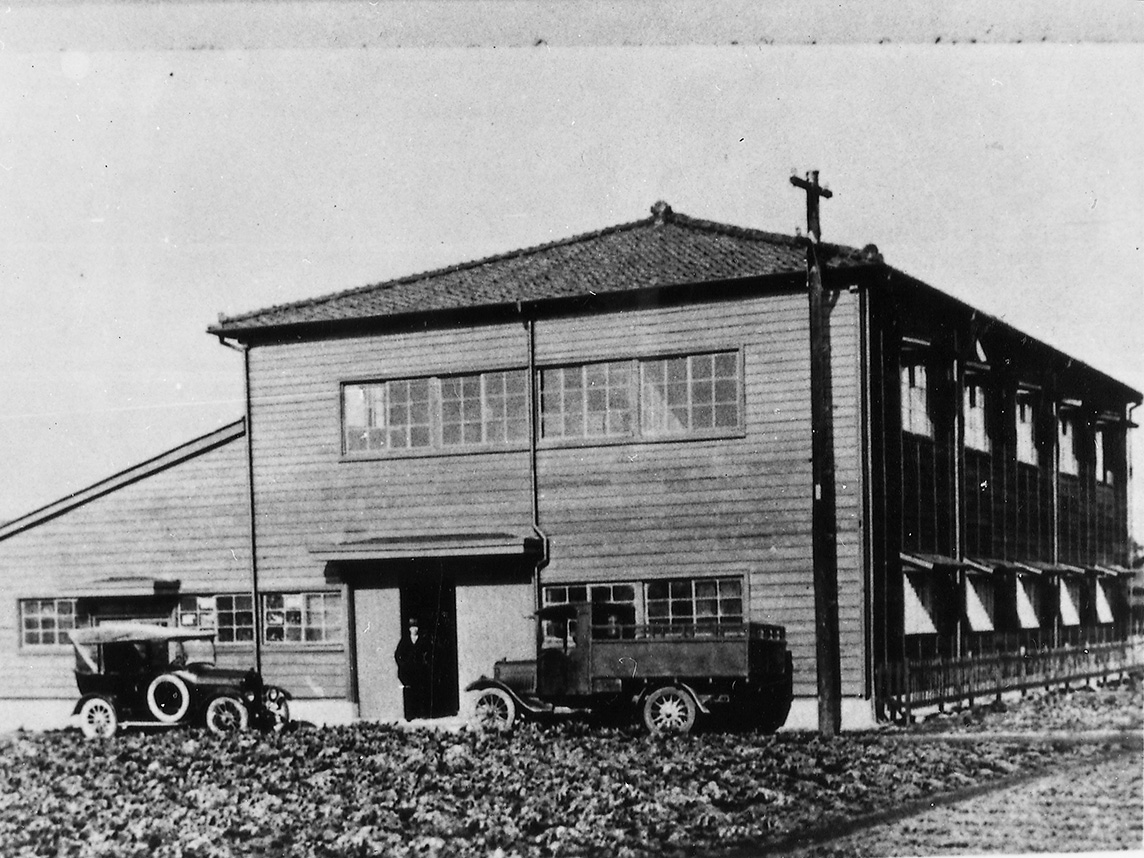
Kwaishinsha Factory
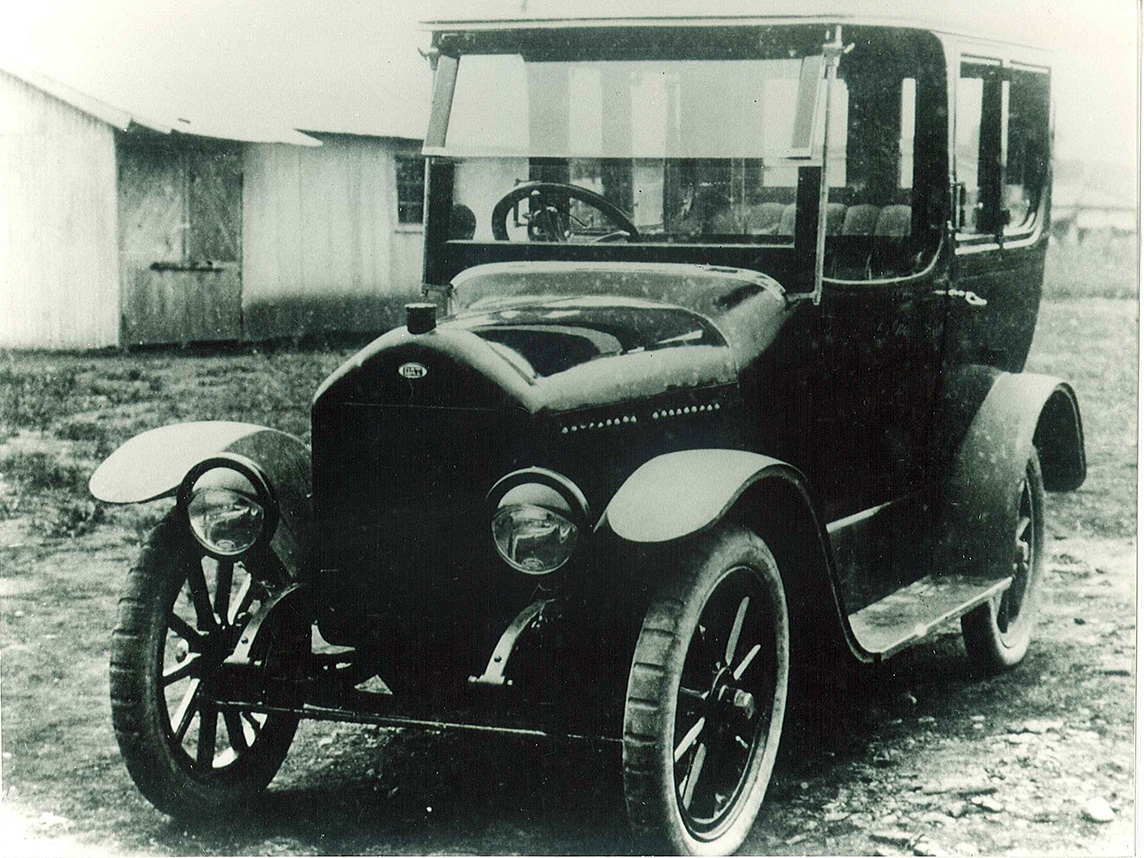
DAT-41 passenger car
1919
Establishment
of
Jitsuyo
Jidosha
Seizo
Co.,
Ltd.
William
R.
Gorham,
an
American
engineer,
developed
a
three-wheeled
vehicle
in
1919.
This
drew
attention
from
a
businessman
in
Osaka,
who
established
Jitsuyo
Jidosha
Co.,
Ltd..
The
mechanical
equipment,
auto
parts,
and
materials
were
ordered
and
imported
from
the
United
States.
Jitsuyo
Jidosha
Co.
was
a
modern
automobile
factory
of
the
time.
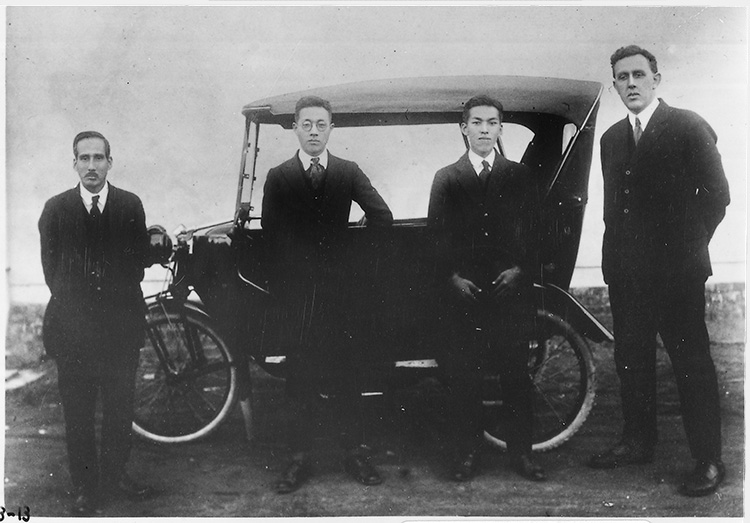
Mr. Gorham (on the right) and tricar
1920's
1925
Establishment
of
DAT
Jidosha
&
Co.,
Ltd.
Kwaishinsha established DAT Jidosha & Co., Ltd. for the purpose of strengthening sales.
1926
Establishment
of
DAT
Jidosha
Seizo
Co.,
Ltd.
Jitsuyo Jidosha Seizo Co., Ltd. became DAT Jidosha Seizo Co., Ltd. and merged with DAT Jidosha Trading Company.
1930's
1931
DAT
Jidosha
Seizo
Co.,
Ltd.
becomes
affiliated
with
Tobata
Casting
Co.,
Ltd.
Tobata Casting Co., Ltd., who was manufacturing the automobile parts, planned to advance to the automobile industry and received DAT Jidosha Seizo to be affiliated under them.
1932
The
birth
of
DAT
SUN
In 1931, DAT Jidosha Seizo Co., Ltd. became a subsidiary of Tobata Casting Co., Ltd., and developed its first 495cc compact size passenger vehicle. In the following year, 1932, the company changed its name to Datsun: DAT was taken from the initial letters of three men. The SON was changed to SUN, since the SON sounded the same as a word meaning "disadvantage" in Japanese.
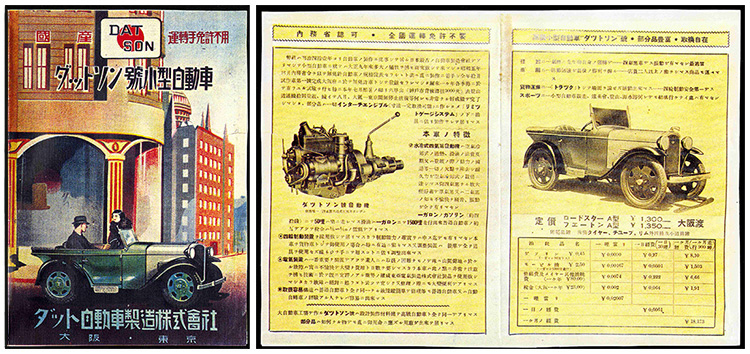
Brochure cover of the 1932 DATSON
1933
Tobata
Casting
Co.,
Ltd
establishes
Automobile
Division
Tobata Casting Co., Ltd. set up an Automobile Division in March 1933 and began automobile production in earnest. In October of the same year, the company purchased more than 66,000m2, of reclaimed land in Shinkoyasu on the coast in Yokohama City (the site where the present Yokohama Plant is located).
Established Jidosha Seizo Co., Ltd. in Yokohama.
Yoshisuke Aikawa's two holding companies, Nihon Sangyo and Tobata Casting, which he also established, invested in and established Jidosha Seizo Co., Ltd. on December 26.
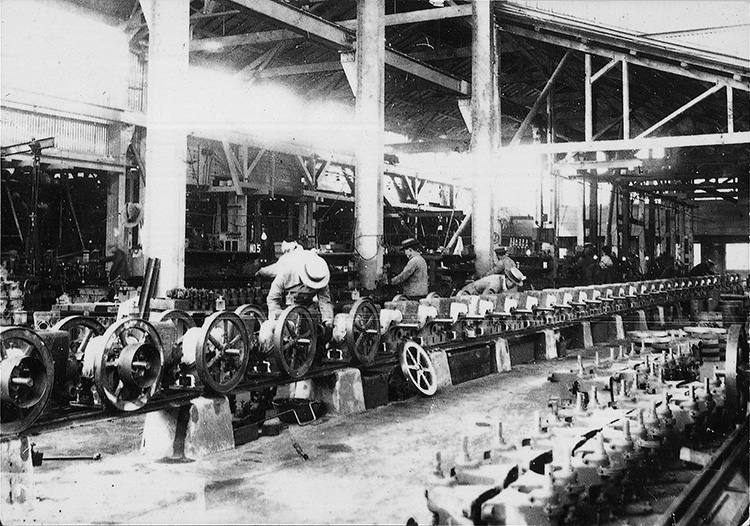
Inside of the Tobata Casting Factory
1934
Corporate
name
changes
to
Nissan
Co.,
Ltd.
The corporate name was changed to Nissan Motor Co., Ltd when Nihon Sangyo Co., Ltd become the 100% investor of the general meeting of stockholders in June.


